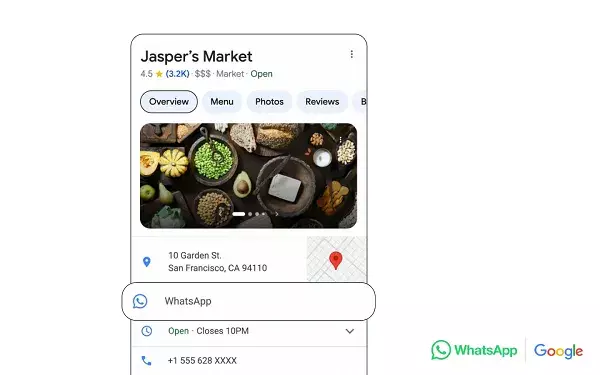In an era where digital interaction is king, the competition for consumer attention has never been fiercer. Meta’s recent announcements underscore a fundamental transformation in how businesses engage with their audiences: messaging platforms are evolving from basic communication tools into comprehensive, dynamic ecosystems. The surge in messaging usage reflects a cultural shift—consumers prefer quick, personalized interactions, and businesses that adapt to this trend will thrive. Meta’s strategic push to expand messaging options isn’t just about keeping pace; it’s about redefining engagement on a new level. Companies that leverage these tools can cultivate stronger relationships, foster brand loyalty, and ultimately drive revenue growth.
Seamless Integration and Enhanced Customer Experience
One of the most impactful updates is the integration of WhatsApp directly into Google Business Profiles. This development means customers can initiate conversations seamlessly from Google Search or Maps without extra steps or app switching. Imagine a customer finding your business on Google, noticing a WhatsApp button, and instantly making contact—this simplifies the customer journey and increases the likelihood of engagement. From a business perspective, this integration is a strategic masterstroke; it not only increases visibility but also streamlines the approachability of your brand in a crowded digital space.
Furthermore, Meta’s move to enable direct link opening within WhatsApp itself is highly significant. This feature reduces friction—users no longer need to leave the app to view links or complete transactions. It’s a subtle change but a powerful one, facilitating smoother interactions and encouraging higher response rates. With these enhancements, you’re not just making it easier for customers to contact you; you’re embedding convenience directly into their browsing experience.
Cost-Effective Strategies and Outcome-Focused Advertising
Meta’s revamp of its pricing models through the introduction of volume tiers signals an acknowledgment of the diverse needs of businesses. This flexibility allows both small enterprises and large corporations to choose plans that align with their growth trajectory. Moreover, the emphasis on outcome-driven ad options—such as purchase and lead optimization—spotlights a shift toward measurable results. These updates demonstrate that the future of advertising is not just about impressions but about tangible outcomes that matter to your business, whether that’s converting a lead or completing a purchase.
The new “automatic-destination messaging ads” exemplify this forward-thinking approach. They enable businesses to meet customers where they are—whether on WhatsApp, Messenger, or Instagram Direct—delivering personalized messages that are more likely to foster conversions. This level of integration indicates that future marketing strategies will heavily rely on cross-platform messaging to ensure a cohesive, customer-focused experience.
Expanding Functionality to Meet Business Needs
Meta’s commitment to expanding WhatsApp Business tools is an acknowledgment that efficient communication is central to customer satisfaction. Allowing simultaneous use of the WhatsApp Business Platform and the WhatsApp Business App provides greater flexibility for companies to manage interactions across different workflows. Additionally, native order tracking capabilities via WhatsApp—integrated with platforms like Shopify and WooCommerce—transform WhatsApp from a simple messaging app into an operational tool capable of handling transactional updates. This approach not only enhances customer experience but also reduces the friction of post-sale customer service.
The ability to send verification codes and one-time passwords through WhatsApp is a nod toward security and convenience. As data privacy concerns mount, facilitating secure verification in a single app simplifies user experiences and builds trust. Meanwhile, updates to Messenger, including caller identification and AI call summaries, demonstrate Meta’s dedication to improving real-time communication, making it more transparent and recordable.
The Future is Customer-Centric and Data-Driven
Meta’s array of messaging innovations reflects a broader industry trend: a move toward customer-centric, data-rich interactions. The enhancements aren’t merely feature add-ons; they represent a strategic shift toward making messaging an integral part of your marketing and customer service arsenal. However, it’s essential to approach these changes critically. While more options and integrations offer immense potential, they also demand careful management to avoid overwhelming your team or diluting your messaging strategies.
The key takeaway is that businesses must think beyond traditional advertising and embrace these evolving messaging tools as vital components of their brand communication strategy. Success will depend on how effectively you leverage these platforms—not just to respond to customers but to anticipate their needs and deliver personalized, immediate value. With the right approach, messaging platforms can transform from simple communication channels into powerful engines of growth, loyalty, and competitive advantage.

